Distinguished Critique: The Untold Legend of the Batman Review
DC's second-ever limited series isn't as adroit as Frank Miller in exploring Batman's origin, but it nobly distills the hero's history into a succinct examination of his mission
—by Nathan on June 2, 2024—
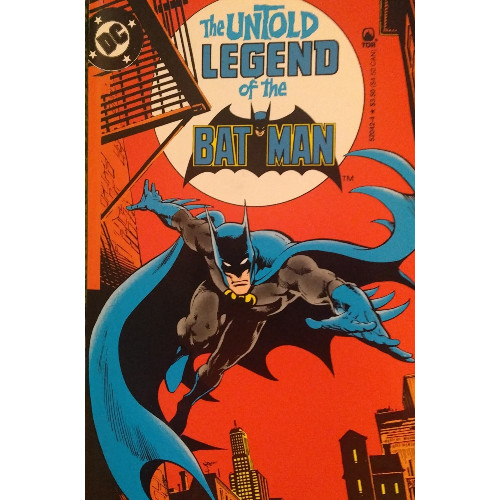
Often during this series, I have swam in the post-Crisis on Infinite Earths waters of the DC Comics universe, exploring the ins and outs of various stories set in the mid-to-late 80s, whether it's been the revitalization of Wonder Woman, an Aquaman made revolutionary freedom fighter, or the bizarre passing of the torch that was Wally West's first several steps in his uncle's Flash boots. I wish, for today and in other posts, to leave the deep ends of the post-Crisis DC pool and swim in fresher waters I have not yet explored. The depth here may depend on the story.
Near Christmas this past year, my sister and I were browsing a local antique store, searching for a gift for my mom, when I happened upon a stall selling mass market paperback trades. They were slim and small, leaner in width than your average trade paperback. One labeled "Batman" caught my eye, and upon closer inspection, I discovered…well, I discovered I wasn't quite sure what this book labeled "The Untold Legend of the Batman" was. Through Google, I found it was a three-issue series published in 1980 and that this slim volume was a black-and-white reproduction of the series. Uninterested at the moment, I passed up the opportunity to purchase the volume.
More recent circumstances have led me to develop a renewed interest in the three-issue series, but to my dismay, I found no way to purchase a standalone, colored copy. The series has been reprinted in one horrendously overpriced and two more reasonably priced hardcover collections. Disliking hardcover in general, I remembered the black-and-white version, momentarily struggling knowing the volume was not in color. My distaste for hardcovers beat out my wish for a physical full-color version (yes, digital was an option, but those prices outstripped the cost of this slim volume), and upon re-visiting the store, I found the stall had a single copy left.
So this will be a somewhat different review, my first-ever examination of a black-and-white narrative, specifically a black-and-white narrative published during the pre-Crisis era. I'll admit, for various reasons, to have entered this story cautiously, specifically for the lack of color and knowing Untold Legend had a mountain to climb: the looming giant that is Frank Miller's operatic, post-Crisis juggernaut of a Batman origin: "Year One."
The Untold Legend of the Batman
Writer: Len Wein
Pencilers: John Byrne, Jim Aparo
Inker: Jim Aparo
Colorist: Glynis Oliver (original issues)
Letterers: John Costanza, Jim Aparo
Issues: The Untold Legend of the Batman #1-3
Publication Dates: July-September 1980
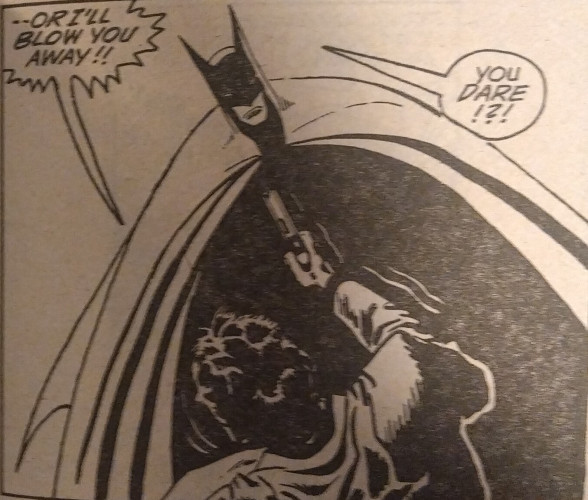
In 1979, DC published the first-ever comic limited series: Superman: World of Krypton. Its success led to the development of the "limited series" as a storytelling vehicle, and within a short amount of time, DC and Marvel both were producing series such as Camelot 3000, Wolverine, Content of Champions, and Marvel Super Heroes Secret Wars. I intend to review World of Krypton at a later date, but for now, we'll focus on the narrative which is, arguably, its spiritual successor.
As much of a fan of Batman as I am, I am not well-versed in the character's pre-Crisis history. I know the broad strokes of Batman lore–the murder of his parents, his promise to fight crime, his adoption of Dick Grayson and the development of Robin. I know the supporting cast members and the villains. I know Alfred was once presumed dead only to come back as (temporarily) the Outsider. But I don’t know the specifics, so I cannot tell you all the bits of history Len Wein, John Byrne, and Jim Aparo pulled together to create this series.
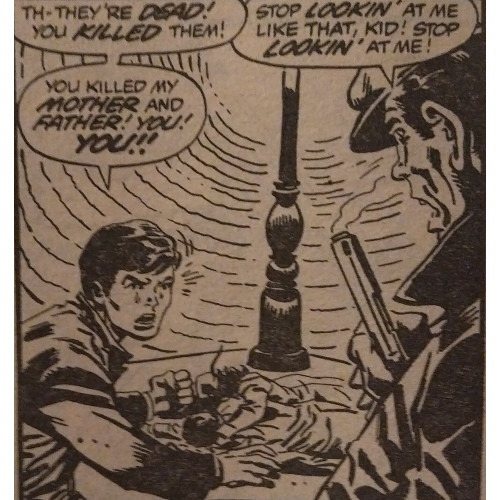
That was another worry heading into this series: I was concerned Untold Legend would be a condensation of various bits of Batman lore, making sense of all the odds and ends writers had introduced in previous narratives and feeling more like a list of important scenes and characters rather than a full-fledged story. To a minor extent, it is. You are treated to a wealth of info for various characters, including Batman himself as well as Robin, Alfred, and Commissioner James Gordon, and I felt I could somewhat identify pieces used here which were most likely introduced previously. Alfred's career as an actor is mentioned, as is Bruce learning from a detective. I presume Robin's origin and Batman hunting down Joe Chill are all faithfully reproduced, to a certain degree, from the comics which originally established those pieces of lore.
But for the most part, Untold Legends pulls these bits and bobs together in a way which resonates well with the reader. Wein develops a framework tale, a mystery which keeps the story flowing while characters slip into flashbacks to recount their personal histories with Batman. The trick works fairly well, with characters given substantial reasons to suddenly become nostalgic. By time you read Commissioner Gordon's memories, the idea has somewhat lost its novelty, but Wein nicely adds thematic resonance to each of these narratives to make them more compelling together than they would be alone. Is it a hokey narrative device replicated multiple times? Sure, to an extent. Look past that though, and you find the convenient nostalgia is necessary.
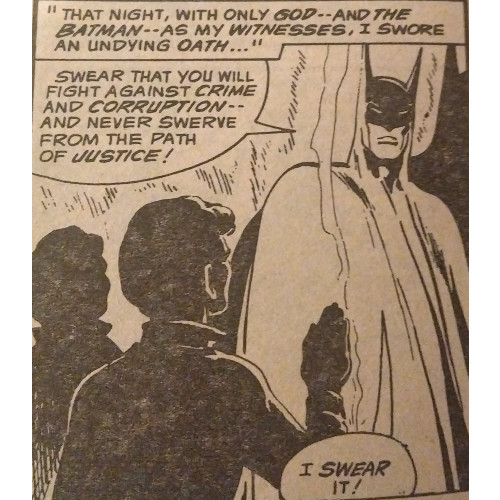
Bruce's story takes up the entire first issue, and we're given a greater sense of his dedication to his cause than his introduction decades earlier may have allowed. It's startling to learn, for example, that this version of Bruce wasn't aware of the deeper meaning behind his parents' murders, and his search for justice over their deaths (something Miller ignored in his version) becomes a prominent part of the issue. Yet Wein lingers on particular moments which allow us to watch Bruce's development. A scene where Bruce debates a college professor over the differences between justice and law comes full-circle when Bruce must decide what to do with his life once his parents' murderer pays for his crimes–what would it mean to continue this bat-shaped charade, to take the law into his hands on a greater scale?
Wein, though sparsely, digs into Bruce's psyche, proposing a certain brokenness equated with his quest/obsession. There are narrative reasons for this which culminate in a somewhat lacking conclusion, but even the sheer mention of Bruce's fractured way of thinking is an appreciated development, offering depth to the whole "dress as a bat and punch clowns" bit which has been taken so straightforward so often. He's still a man on a mission to destroy the evil which took the lives of his parents, but Wein presents Bruce on a grander quest against all injustice. The debate with his college professor detours Bruce from his original goal, to become a policeman, after seeing "law" and "justice" are not synonymous, implying a hindrance to his work if Bruce Wayne ever took up a badge (which, as an aside, would be a fascinating "What If-?" to explore). So there is lingering nobility in the mission Bruce has dedicated his life to, even if Wein admits the perilous nature of obsession dancing at the fringes of Bruce's mind.
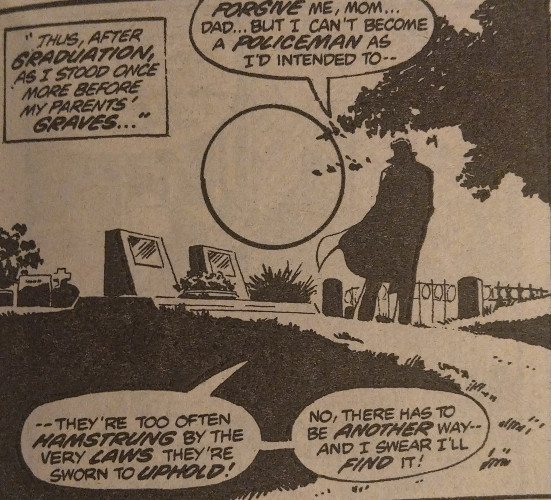
Miller's Batman is not so charitably driven, which creates an engaging schism between his version of Batman and Wein's. Yes, Miller's Batman through "Year One" does cling to the hope of creating a better city through his crusade, but his is a more tentative climb towards that notion. Wein's is a Batman who, basically from the outset, is driven by the hope of his mission. He may question and doubt, but he emerges full-force, bolstered by an optimism Miller's Batman has either not yet discovered or determined does not exist. Miller's Batman doesn’t appear to "love" Gotham in the same way Wein's narrative notes his Batman does; he's afraid of what the city has become, and he elects to turn that fear inside out to make others a little less scared.
This isn't to indicate Wein’s version of the character isn't worth analyzing. I was actually surprised by the depth with which he molded Batman and his assorted cast–the notion Bruce originally determined to be a policeman is a tantalizing thought and makes more logical sense than the cape and cowl routine he later embraces; Robin briefly wrestles with his place at Batman's side, momentarily miffed at the normal childhood and adolescence he has been asked to sacrifice for his mentor's cause. Moments such as these can sometimes feel too brief, but they tap at the imagination and ask one to wonder about how these facets could be more emphatically explored.
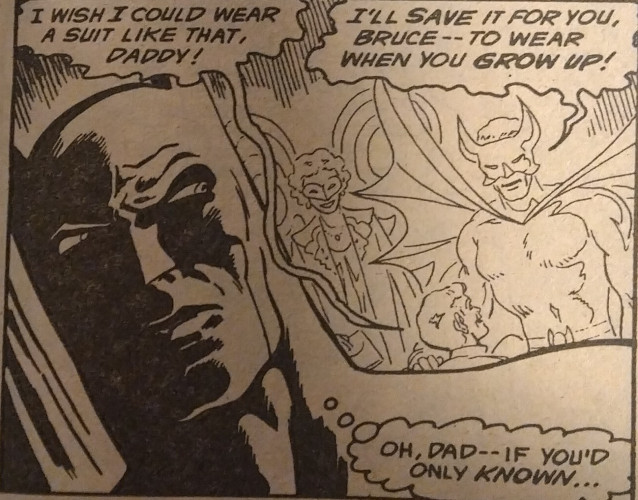
Yes, this series can show its age, and there are elements which leave Untold Legend a far cry from the more adept explorations of Batman's origin seen in "Year One," Batman: Earth One, or even Batman: Zero Year. But this is a noble attempt to wrangle all the scattered pieces of Batman lore and bring them into one narrative, backed by an underlying mystery engaging enough to keep the story from feeling like just a list of important historical moments. Honestly, my biggest complaint is this slim volume isn't in color…which, when given all the good it accomplishes, is only a sliver of gray mixed in with the black-and-white.